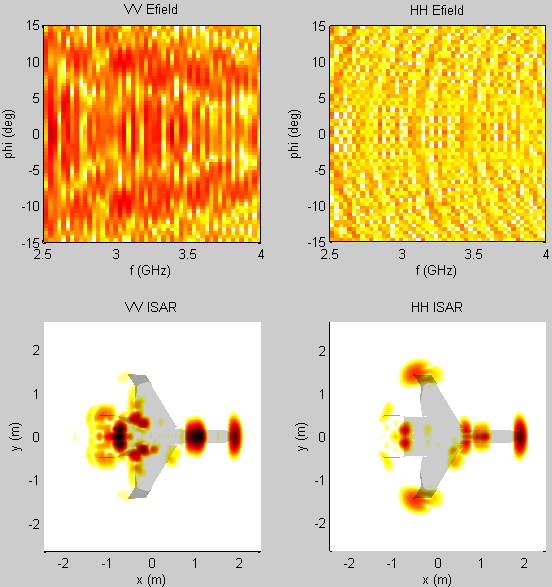Puma-EM is an open-source computational electromagnetics software developed and actively maintained by Idesbald Van den Bosch. It uses surface Method of Moments, enhanced by the Multilevel Fast Multipole Method. The code is highly parallelized and runs on laptops, desktops and clusters. More information is available here.
This software can be used for RCS or antenna analysis. For example, IEEA used it to compute the field scattered by large perfectly conducting objects, like this drone (EM workshop, ISAE).

Because Puma-EM is able to quickly simulate the monostatic scattered field, it was used to compute this field over a frequency range and a angle range. A basic ISAR image of the target was obtained from this results with a simple 2D FTT.

The ability to solve large problems is very useful to assess the effect of a carrier on the radiation of an antenna. The example shown below is the surface current induced by a 2.4 GHz monopole antenna mounted on a helicopter. The obtained map contains complex coupling phenomena that would have been challenging to simulate with a ray based technique. The size of the problem is 2.6 millions of unknowns. It has been solved with little more than a hour on 12 CPU cores of our computer. For the fun, the aircraft has been carefully selected (you know, Puma-EM simulating a Puma helicopter).











